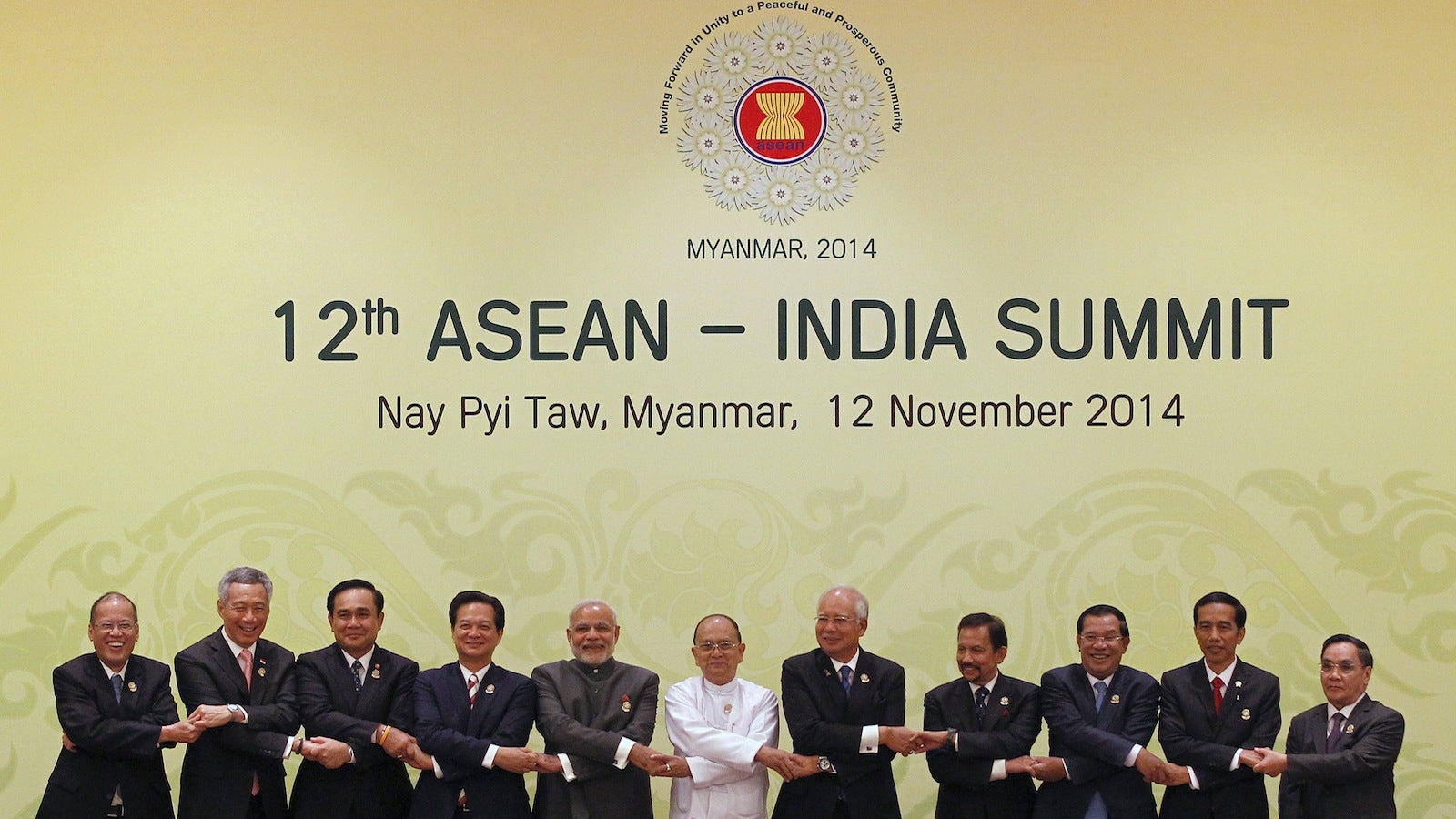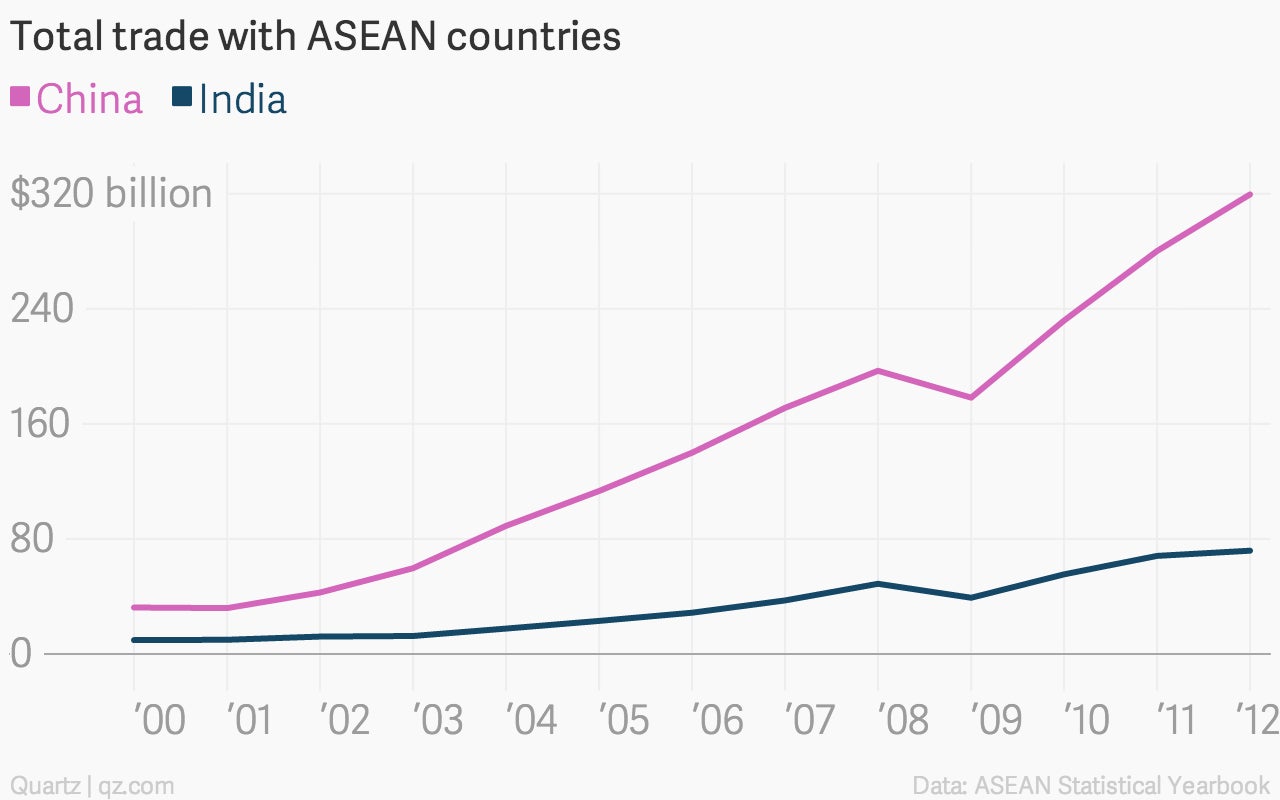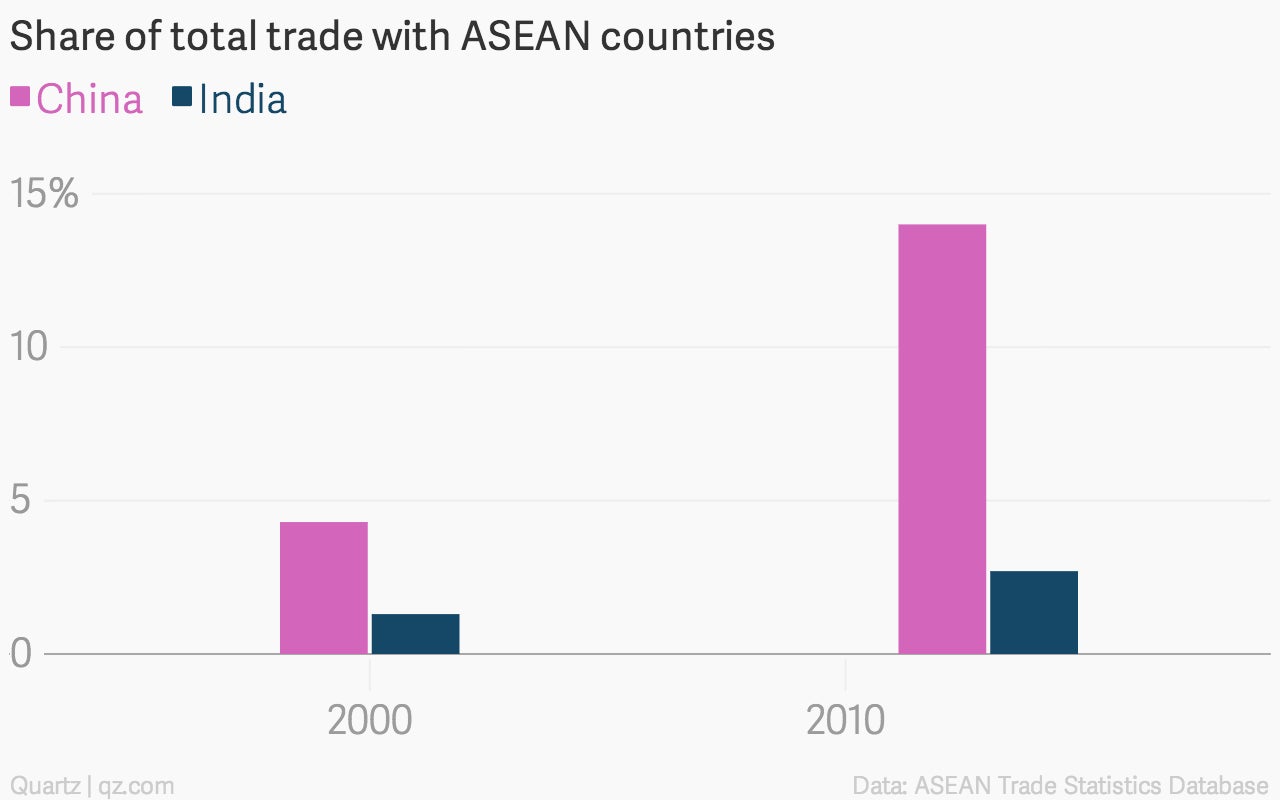Narendra Modi wants to “Act East” but catching up with China won’t be easy
India’s “Look East” policy has transformed into the “Act East” policy under prime minister Narendra Modi, as he seeks to reinvigorate New Delhi’s relationship with Southeast Asia.


India’s “Look East” policy has transformed into the “Act East” policy under prime minister Narendra Modi, as he seeks to reinvigorate New Delhi’s relationship with Southeast Asia.
At the annual summit of the 10-member Association of Southeast Asian Nations (ASEAN) in Myanmar on Nov. 12, Modi laid emphasis on the re-engagement in his first meeting with leaders from the region.
“My government has been in office for six months and the intensity and momentum with which we have enhanced our engagement in the East, is a reflection of the priority that we give to this region,” he said.
“Rapidly developing India and ASEAN can be great partners for each other,” he added.
Although that has been the sentiment in New Delhi since 1992—when the then prime minister PV Narasimha Rao initiated the “Look East Policy” (PDF)—the expansion of India’s economic relationship with ASEAN has been lacklustre.
In comparison, China has powered ahead, becoming ASEAN’s largest trade partner in 2009 and continuing to make deep inroads into the region in the last five years.
So, if India now wants to “Act East,” instead of merely “looking”, there is a lot of catching up to do, as these charts show.

While China’s share of trade with ASEAN countries jumped from 4.3% in 2000 to 14% in 2013, India just about doubled its share from 1.3% to 2.7% during the same period.

Although India and ASEAN have been negotiating a free trade agreement (FTA) since 2005, the pact on services and investments was only concluded in September this year, almost a decade after talks first began. The FTA on goods was signed in 2009 and operationalized in 2010.
Apart from these delays, the expansion of India-ASEAN trade has also been hamstrung by connectivity issues, with Myanmar providing the only viable land route between India and the Southeast Asian regions. A 2011 report (PDF, page 11) by the Economic Research Institute for ASEAN and East Asia notes:
Though both China and India are the emerging economic superpowers in the region as well as the immediate neighbors to ASEAN, the exposure of India in ASEAN is still limited compared with China, reflecting the differences in the historical relationships and the weaker physical connectivity with ASEAN.
With Myanmar now emerging after decades of seclusion, India has an opportunity to made amends. The time to act is now.